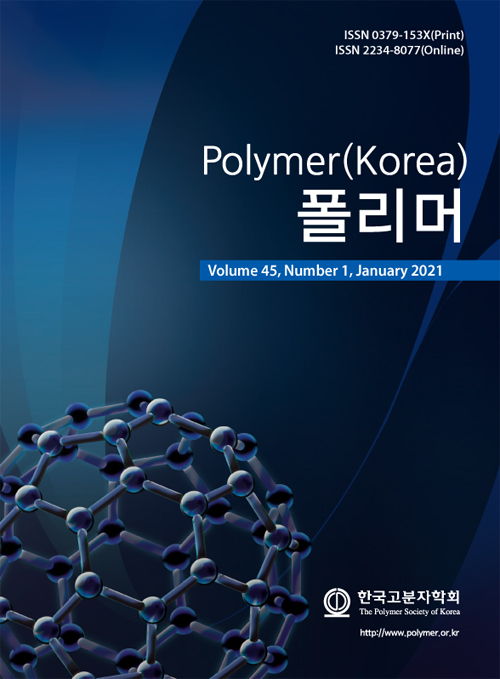- Synthesis and Application of Cationic Waterborne Polyurethane as Fixing Agent for Cotton Fabric
*College of Textile and Clothing Engineering, Soochow University, Suzhou 215021, China **National Engineering Laboratory for Modern Silk, Suzhou 215123, China
- 면섬유 고정제를 위한 양이온 수용성 폴리우레탄의 합성 및 응용
The traditional reactive dyeing of cotton has the disadvantage of poor fastness. In order to improve the fastness, a novel environment-friendly cationic waterborne polyurethane (CWPU) was successfully synthesized via step-by-step polymerization. The CWPU was prepared from isophorone diisocyanate (IPDI), polypropylene glycol (PPG-1000), methyl ethyl ketone oxime and hydrophilic monomer (EGDEA). The chemical structure of CWPU was characterized by Fourier transform infrared spectroscopy. Effects of n (IPDI/PPG-1000), EGDEA dosage, and the neutralizational degree on the properties of the waterborne polyurethane emulsion and the fastness of the treated dyed cotton fabrics were investigated. Particle size and zeta potential were tested to evaluate the emulsion stability. Scanning electron microscope showed that CWPU had been successfully finished on the fabric. Compared with the untreated cotton fabric, the dry and wet rubbing fastness of the treated cotton fabric dyed with reactive dyes increase 0~0.5 and 0.5~1 level, respectively, and the wash fastness increases 0.5~1 level.
Keywords: polyurethane, cation, fixing agent, reactive dyes, cotton fabric
- Polymer(Korea) 폴리머
- Frequency : Bimonthly(odd)
ISSN 0379-153X(Print)
ISSN 2234-8077(Online)
Abbr. Polym. Korea - 2023 Impact Factor : 0.4
- Indexed in SCIE
 This Article
This Article
-
2021; 45(1): 1-11
Published online Jan 25, 2021
- 10.7317/pk.2021.45.1.1
- Received on May 26, 2020
- Revised on Aug 3, 2020
- Accepted on Sep 1, 2020
 Correspondence to
Correspondence to
- Xiangdong Zhou
-
*College of Textile and Clothing Engineering, Soochow University, Suzhou 215021, China **National Engineering Laboratory for Modern Silk, Suzhou 215123, China
- E-mail: zhouxiangdong@suda.edu.cn










 Copyright(c) The Polymer Society of Korea. All right reserved.
Copyright(c) The Polymer Society of Korea. All right reserved.